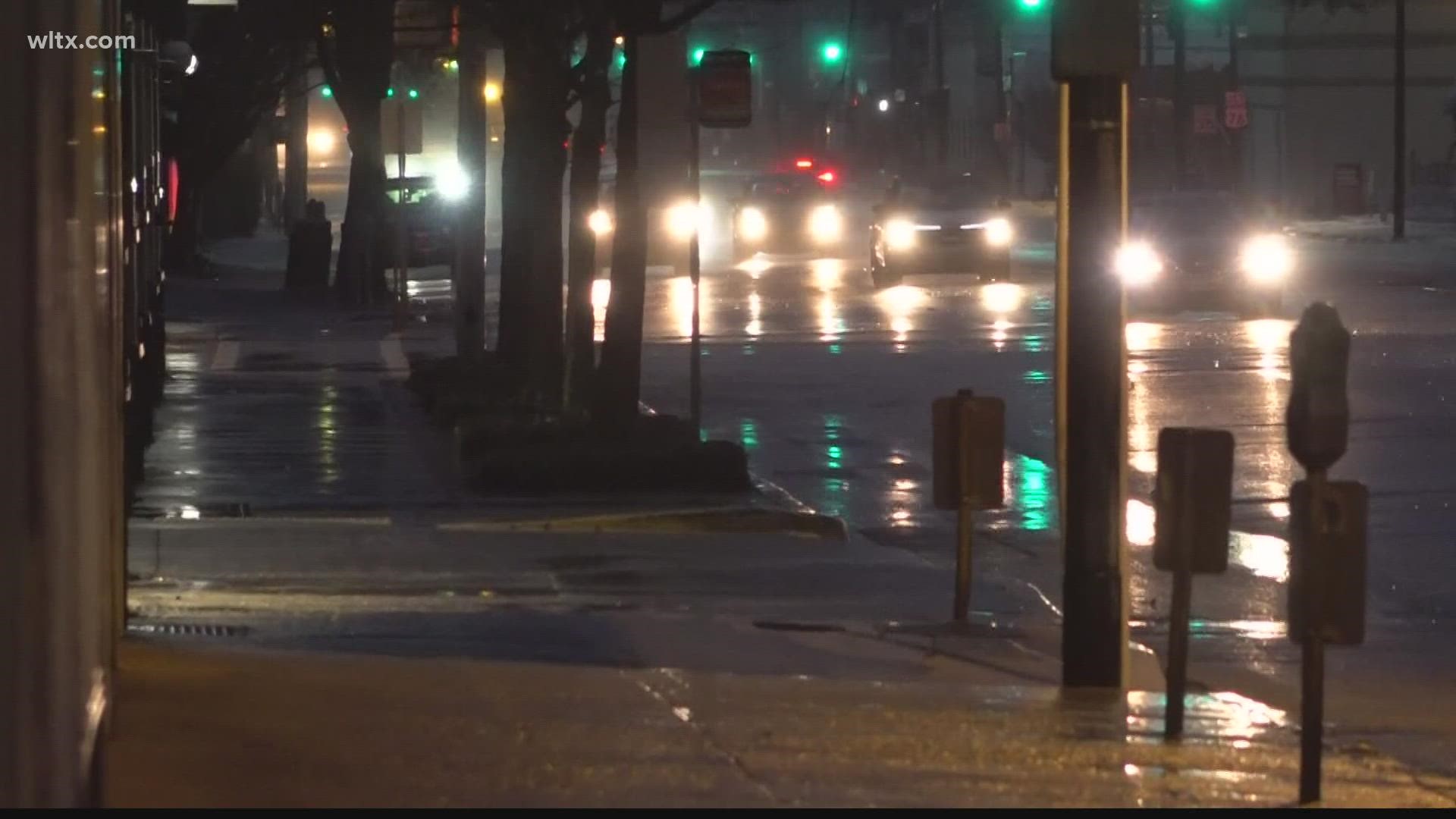COLUMBIA, S.C. — With winter weather expected to create hazardous road conditions this weekend, now is the time to make sure you are prepared to drive in snow and on icy roads if you aren't able to stay at home.
Download the free WLTX app for the latest weather on your mobile device.
Remember: Winter conditions call for a different kind of driving than normal weather - slower speed, slower acceleration, smoother steering, and slower braking.
If you must travel the roadways, here are some tips from the South Carolina Department of Public Safety (SCDPS) for doing so as safely as possible.
REDUCE SPEED
Slow down for wet, snowy, or icy conditions. You will be more likely to maintain control of your vehicle at lower speeds. Slow down when approaching intersections, off-ramps, bridges or shady spots, which are all potential problem spots for black ice.
ALLOW PLENTY OF DISTANCE
Decrease your speed and leave plenty of room to stop. Everything in slick conditions takes longer so leave yourself that room. It not only gives you that room, but it protects you from other drivers that may not be driving appropriately.
Avoid excessive actions while steering, braking or accelerating to lessen the chances of losing control of the vehicle when you’re driving on snow, ice or wet roads.
AVOID SKIDDING
Slow down by de-accelerating. Lift your feet off the accelerator completely and keep your steering wheel fixed in the position it's in. Slowing down will give you more control and prevent needless damage.
Braking gently will help you avoid skidding. If you have anti-lock brakes (ABS), press the pedal down firmly and hold it. If you don’t have anti-lock brakes, gently pump the pedal.
If Your Vehicle Starts to Skid:
- Take your foot off the accelerator.
- Counter steer: If the rear of your vehicle is sliding left, steer left into the skid. If it’s sliding right, steer right. Steer in the direction you want the front of the vehicle to go.
- If you have standard brakes, pump them gently.
- If you have anti-lock brakes (ABS), do not pump the brakes. Apply steady pressure to the brakes. You will feel the brakes pulse -- this is normal.
If you end up going off the road, try to steer into things that will cause the minimum amount of damage, like an empty field or yard.
KNOW YOUR VEHICLE
Don't assume your vehicle can handle all conditions. Even four-wheel and front-wheel drive vehicles can encounter trouble on winter roads.
If your vehicle is equipped with Electronic-Stability Control (ESC), make sure it’s turned on. ESC will assist you in maintaining control of your vehicle if it loses traction.
Keep your lights and windshield clean and turn on your lights to make you visible to other motorists.
RELATED: How to drive on icy roads
PAY ATTENTION TO ROAD CONDITIONS
Be especially careful on bridges, overpasses and infrequently traveled roadways, which tend to freeze first. Even at temperatures above freezing, if the conditions are wet, you might encounter ice in shady areas or on exposed roadways like bridges. Be aware that road conditions are constantly changing.
The South Carolina Department of Transportation (SCDOT) has a couple of resources available to help you monitor conditions throughout the state.
- To view traffic cameras and get up-to-date traffic information, visit SCDOT's 511 site.
- To view construction, maintenance and emergency conditions, visit SCDOT'S Roadway Information System.
BEWARE OF BLACK ICE
Black ice is a thin coating of clear ice that can form on the pavement surface and if often difficult to see, especially at night.
Think your 4-wheel or all-wheel drive will help on black ice? Think again. All vehicles have 4-wheel brakes. It’s your car’s anti-lock brakes that can help you safely stop and regain control.
If you do hit black ice, remain calm and avoid overreacting. The general rule is to do as little as possible and allow the car to pass over the ice.
- Do not hit the brakes.
- Try to keep the steering wheel straight.
- If you feel the back end of your car sliding left or right, make a very gentle turn of the steering wheel in the same direction. If you try to struggle against it by steering in the opposite direction, you risk skidding or spinning out.
DON'T USE CRUISE CONTROL
Avoid using cruise control in winter driving conditions.
STAY ALERT
When driving in adverse weather conditions, look farther ahead in traffic than you normally do. Actions by other vehicles will alert you to problems more quickly, and may give you a split-second of extra time to react appropriately.
WHAT IF I GET STUCK?
If you get stuck, do not spin your wheels. This will only dig you in deeper. Instead:
- Turn your wheels from side to side a few times to push snow out of the way.
- Use a light touch on the gas, to ease your car out.
- Use a shovel to clear snow away from the wheels and the underside of the car.
- Pour sand, cat litter, gravel or salt in the path of the wheels, to help get traction.
The South Carolina Department of Transportation (SCDOT) urges folks to avoid travel if at all possible during winter weather events.
If you must travel, officials ask you to use extreme caution, reduce speeds, stay clear of road crews performing clearing and de-icing operations, and approach bridges and overpasses with extreme caution as they will accumulate ice first.

